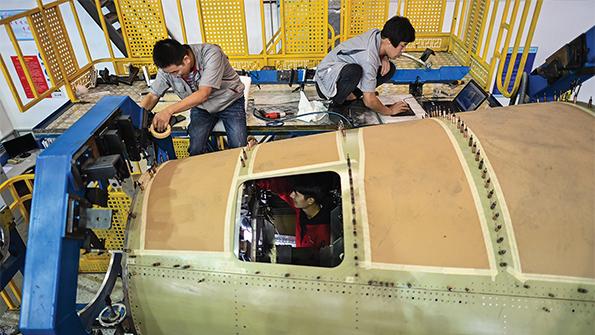Opinion: MRO Industry Must Prepare For China’s Delayed Recovery

In 2020, it was predicted that many millions of Chinese passengers would fly for the first time that year. This figure represented the untapped potential of China with its growing middle class. To tap into this new market, the Chinese civil aircraft fleet was expected to grow by 10% each year over the next decade, representing approximately 3,600 new aircraft. Obviously, it is hard to underestimate the importance of China to the industry’s growth aspirations.
Those aspirations were, of course, put on hold during the pandemic. But now that the global sector can, at last, begin to look forward again with some confidence, the recovery in China—and the significant opportunities that will accompany it—is uncertain and lagging the rest of the world.
Despite promising domestic airline capacity growth in 2020-21, the rise in infection rates across Asia because of the COVID-19 omicron variant was followed by more restrictions, stalling the recovery. During 2020 and 2021, China’s domestic market capacity snapped back and led the world at between 75-85% of 2019 levels, but in the first two quarters of 2022 it slumped to 30%, with limited signs of opening up again. This is a big blow for the Chinese market, and it is further hampering the recovery across Asia, which is beginning to open again but with operators still relying on major routes to and from China to drive real growth.
The West’s recovery, however, is faring much better. It has demonstrated that a rebound in demand will quickly follow once travel restrictions are lifted. When restrictions eventually ease in China, the desire of the growing middle class and the millions of new passengers to fly is bound to resurface.
It is essential that the airline industry be ready to meet this resurgent demand. As seen in Europe recently, it is more likely that recovery will be constrained by capacity than demand. This issue is further exacerbated in a market that takes a long time to get the supply chain ready—you cannot just turn it on by flipping a switch.
However, an important question needs to be answered: Is the MRO sector ready to accommodate the surge when Chinese demand and fleet growth inevitably return?
Establishing MRO capabilities in-country must be a priority. We are seeing a trend of decreasing investment from Western companies in the Asia-Pacific region. At Meggitt, before the pandemic, we expanded our reach by signing a groundbreaking partnership agreement with the Lufthansa Technik Shenzhen MRO facility in mainland China. Although slowed by COVID-19 conditions, we are still forging ahead, investing in the training and development of that facility to ensure that when the need arises, the facility has the right capabilities to support the ramp-up of MRO activity that will be required across the region’s supply chain.
Global MRO suppliers also must continue developing stronger relationships with local OEMs. The Boeing 737 MAX grounding has severely affected new aircraft deliveries, and we are seeing China more strongly promote the use of Chinese-made Comac aircraft. If this trend continues, Comac will be central to future fleet growth in the region and will need the support of an international supply chain to help it meet future demand.
However, this issue goes far beyond the aircraft manufacturers. We must stay connected with operators and our partners across China, many of whom we have not worked face-to-face with for more than three years now. At Meggitt, we are collaborating to forecast orders, ensure our systems and processes work, and prepare capabilities for the reopening of the market.
The international aviation industry needs China, but China also needs us. When the West recovers to 2019 traffic levels, we will still only see limited incremental fleet and industry growth. For there to be real growth worldwide, the fleet must begin to reach its full potential in China. Its stalled recovery is significant for the industry, and we must remain optimistic that China can still drive our industry growth aspirations.
There is an important role for MRO providers to ensure the industry can scale up to meet the exciting prospect of future demand. We need to invest now to help prepare for the many millions of new passengers and to prepare for resumption of the Chinese market’s delayed takeoff.
Adrian Plevin is senior vice president of strategy sales and marketing for services and support at Meggitt.
